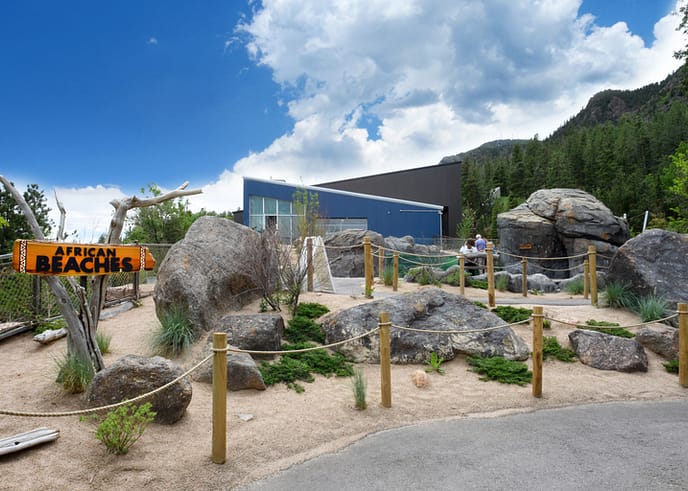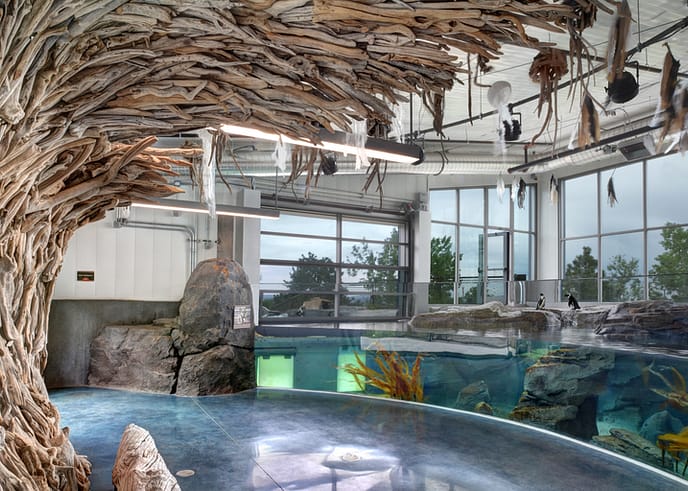Cheyenne Mountain Zoo
Water's Edge: Africa
This new exhibit provides hippos with a river, penguins with a beach, and lemurs with their own island.
Colorado Springs, Colorado
Cheyenne Mountain Zoo
CSNA Architects
17,590
The Nile in Colorado
The Big Picture
This ambitious project began with a daring vision to create a replica of the Nile River and a South African beach… in Colorado. The Water’s Edge: Africa not only provides the animals with a great new area in which to live, play, and breed, but offers new ways for visitors to interact with these fascinating, exotic creatures. In addition to hippos, penguins, and lemurs, East African crowned cranes have a new home. An advanced filtration and recycling system that occupies most of the facility’s basement dramatically reduces water waste.
Ingenuity in Action
The water filtration system installed in this new exhibit (comprising most of the basement) sets the standard for zoos worldwide. The old system used tremendous amounts of water – about 60,000 gallons per day – simply disposing of it when it got dirty. The new system circulates the water through a series of filters, removing impurities, and allowing the water to be reused. This is a huge environmental improvement. Additionally, separate air handlers ensure the new environments maintain the appropriate climate.
The creation of the river banks meant to replicate an African environment was an example of both innovation and state of the art technology. This unique landscape was painstakingly developed by experts in a three-step process that involved tying rebar and filling molds with shotcrete, shaping and texturing the resulting rocks, and painting them to resemble something out of Africa.
Recreating the Nile River and a South African beach was an ambitious goal. In addition to an authentic look and feel for both animals and visitors, the project was expected to create an environment in which the animals could be successfully bred. For the penguins, that involved not only realistic-looking boulders, but small caves for the flightless birds to crawl into and nest. The design incorporated information gleaned from the study of African penguins in the wild and was accurately replicated in order to successfully support the zoo’s breeding efforts.







The little details
- More than 27,000 labor hours worked with zero lost time injuries
- The Hippo and Penguin Exhibition Hall that this new exhibit replaces was built almost 60 years ago and no longer met the needs of the animals.
- There will be in-ground scales allowing visitors to compare their weight to the weight of a hippo
- The team participated in Cheyenne Mountain Zoo’s “Keeper Talks.” explaining to visitors the plans and progress of the Water’s Edge project, and answering questions.

